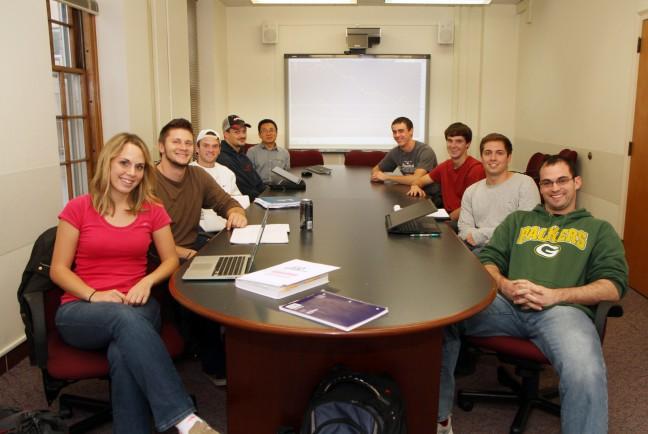The College of Agriculture and Letters of Sciences is now using a real-world commodity-trading software to develop experience in trading and agriculture markets, making students better equipped for agriculture job markets after graduation.
University of Wisconsin first gave this trading software to the School of Business, but when it wasn’t utilizing the software to its fullest potential, Sheldon Du, assistant professor of agricultural and applied economics, asked to incorporate it into his undergraduate course on commodity markets as an alternative.
Du has taken this software to combine economics with aspects of agriculture and business, in hopes to fully equip students enrolled in the agricultural and applied economics major with real-world experience.
Linda Davis, an undergraduate student service advisor for the agricultural and applied economics major, described the major as “all-encompassing.” Students are required to take courses in economics, including some courses through the School of Business, as well as agricultural business courses, all of which require hands-on experience.
Using this software, students can be equipped to better adapt to the different circumstances and potential situations that can occur in the vast job field, Davis said.
“Agro-business is a huge industry that can cover anybody from craft foods to finance in the agriculture industry to John Deere tractors,” Davis said. “It encompasses anything that has to do with agriculture industry, and this particular software is really only for students who are interested in working in the futures and commodity markets.”
Du emphasized the importance of understanding economic concepts such as commodity futures, options contracts and pricing mechanisms.
Using the software, students are able to apply these commodity trading concepts beyond academics, including business contracts on grain, dairy products and energy. Students practice buying and selling such commodities through future markets, or places where exchanges and trades occur, in order to assess returns and manage price risks, Du said.
Before implementing the software, the class only talked about the concepts, theories and practical examples about how to use the futures and option contracts to weigh the price risk, but students had no idea about how in practice to use trading software, Du said.
“Right now in the professional world, the trading business, even in risk management and brokers, uses the electronic trading system,” he said. “Now students get some idea about what in practice they can use.”
These projects are also supposed to prepare students for a national Chicago Mercantile Exchange group trading competition, Du said. This competition consists of college and university teams competing to make the best commodity training decisions. Du’s students participated in this competition for the first time last winter and will again this spring.
Incorporating this software and partaking in such competitions provides these students with invaluable experience and knowledge that can’t be taught in classrooms, Du said. Combining theories and concepts of commodity markets with situational trading practice yields a sense of experience and knowledge prospective employers want to see, he said.
Exposing students to the theory of commodity markets, along with practical trading situations and tools, help students get a taste for the profession and the experience to impress prospective employers, Du said.


